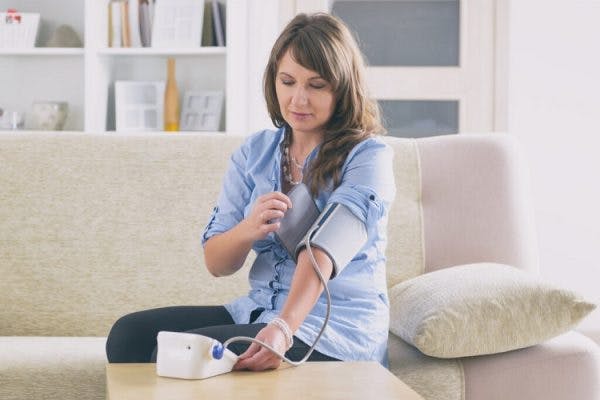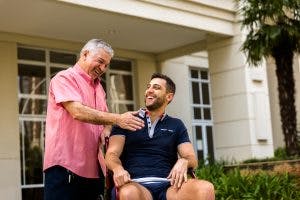Acute spinal cord injury refers to the early stages following one’s injury. If not properly cared for, the effects of an acute spinal cord injury can be life-threatening.
To help you understand what acute spinal cord injury consists of, this article will guide you through its phases and treatment.
Table of contents:
What Does Acute Spinal Cord Injury Mean?
Acute spinal cord injury refers to the early stages of injury to the spinal cord. It consists of 2 phases: primary and secondary. The primary phase is the damage incurred by the initial blow to the spinal cord. This is what causes compression of the spinal cord.
The secondary phase is made up of the “cascade of pathophysiological events [that] result in impaired neuronal homeostasis, apoptosis, and tissue destruction.”
After a spinal cord injury, your body is knocked off balance. Inflammatory processes occur and can cause further damage to the spinal cord. Some of these harmful inflammatory responses include:
- Edema (swelling)
- Formation of free radicals (unstable and highly reactive atoms that can damage cells)
- Release of a neurotransmitter called glutamate (which causes excitotoxicity)
While not much can be done for primary damage, seeking immediate medical attention can help minimize secondary damage.
Acute Spinal Cord Injury Treatment

Treatment for acute spinal cord injuries will vary from person-to-person depending on the type of injury (i.e. how the spinal cord was damaged), severity of injury, and location of injury.
Some of the more controversial reasons behind a lack of standardization for treating spinal cord injuries include the timing of surgery and the use of methylprednisolone.
Timing of Surgery
Nearly 80% of spinal cord injuries require surgery. The goal of surgery following an SCI is to stabilize the spinal cord in order to reduce secondary damage.
Controversy over optimal timing of surgery revolves around two main arguments:
- Surgery should be performed immediately for less overall damage.
- The spinal cord is extremely fragile and immediate surgery may cause more harm than good. Surgery should be put off for a couple of days to allow swelling to go down and to allow for spontaneous improvement.
While a consensus has yet to be established, recent studies appear to side in favor of early decompression to maximize functional outcomes after spinal cord injury.
The Use of Methylprednisolone
Historically, the use of a steroid called methylprednisolone was considered the standard of care for spinal cord injuries. The anti-inflammatory properties of methylprednisolone can help stabilize the spinal cord after injury by reducing swelling.
However, over time, its use has become controversial. Some believe the potential side effects of using methylprednisolone are not worth the moderate amount of healing.
In contrast, others believe that because spinal cord injuries are so time-sensitive, every bit of treatment can help optimize neurological outcomes.
Recovery Process for Acute Spinal Cord Injury

After your spinal cord is stabilized, you’ll have to learn how to adjust to your new body. Depending on the severity of your SCI, the degree of weakness or paralysis you experience below your level of injury will vary.
Management interventions for spinal cord injuries typically include:
- Physical therapy. At PT, you’ll work on maximizing functional outcomes through exercise. This can involve stretching spastic muscles, maintaining range of motion in the joints, and strengthening weakened muscles to relearn movements.
- Occupational therapy. OT will prepare you for the transition back to everyday life by teaching you how to adjust and maximize your independence. It focuses on practicing activities of daily living like getting dressed, performing transfers (moving from one surface to another), toileting, and eating.
- Speech Therapy. If you had a higher-level injury that affected your respiratory function (typically cervical level), you may also work with a speech therapist. They can help to strengthen the muscles used for breathing, as well as improve your cough strength and ability to manage your secretions (in order to minimize chances of getting respiratory infections).
- Medications. Many spinal cord injury patients experience complications like chronic pain, depression, and spasticity. To help you manage them, a doctor may prescribe medications.
- Orthotics. Orthotics are designed to reduce pressure on the joints and promote musculoskeletal alignment. Not all SCI patients will need to wear orthotics, but the extra support can be very beneficial for those that do.
- Emotional support. Adjusting to life after spinal cord injury can be very overwhelming and take a toll on your mental health. Speaking to a psychotherapist or members of an SCI support group can be extremely helpful. They will understand what you’re going through so that you feel less alone and can share effective ways to cope.
As you can see, spinal cord injury survivors are supported by a large team of rehabilitation specialists that assist in recovery. Although acute spinal cord injury refers to just the early phases of recovery, individuals can continue to rehabilitate lost functions for many years on the road to recovery.
Understanding Acute Spinal Cord Injury

Acute spinal cord injuries are time-sensitive. Damage to the central nervous system is permanent because nerve cells cannot reproduce. Therefore, it’s essential to seek immediate medical attention to minimize damage and reduce the risk of further complications.
Rehabilitation during acute spinal cord injury is supported by a large team of rehabilitation specialists. They can help the individual recover as much function as possible, and set them up for continued recovery well after the acute phase is over.
We hope this article helped you better understand what an acute spinal cord injury is and the importance of immediate care.











